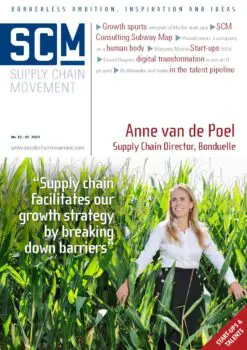Growth spurts are part of life for start-ups

A year ago, Supply Chain Media launched a series of articles on companies partnering with start-ups. What is the current state of play? Are these companies managing to further roll out their start-up solutions? The answer is yes in most cases, according to a roundup by Supply Chain Movement. However, a few have stopped working together. “As a start-up, you always run into difficulties.”
The attacks by Houthi rebels on cargo ships in the Red Sea have once again proved the value of a good visibility tool. As container shipping companies avoid this popular shipping route by sailing around Africa, transport times are significantly increasing – including for Ergobaby, manufacturer of baby carriers, prams and bouncers. “Most of our goods come from Vietnam, India and China. We will have to allow for longer transport times in our planning,” states Riyadh Rashid. He is starting to get used to such disruptions: “I don’t believe we will ever have a stable supply chain like in the time before the pandemic.”
Within Ergobaby, Rashid is responsible for demand planning and replenishment in the sales channels in Europe. In an earlier article for Supply Chain Media – part of a series on collaboration between companies and start-ups – he talked about Limbiq, a German start-up that started developing a visibility tool in 2020. Ergobaby uses this tool to gain insight into deliveries from Asia. “Since our last conversation, we have continued to roll out Limbiq’s solution. All suppliers are now actually connected. At least formally. Unfortunately, there are a few issues in practice. Not every supplier is playing the game the way we would like to play it,” explains Rashid.
The intention is for all suppliers to upload their status information into Limbiq on time. However, some suppliers continue to send Excel files with the requested data as before. “Fortunately, we now have a tool that allows us to still keep full visibility on that part of the supply chain. If we receive a file from a supplier, we can import it ourselves. Of course, we try to get our suppliers to do that, but it takes time to change their behaviour. The most important thing is that we now have control over our supply chain.” … … …
Want to read more?











